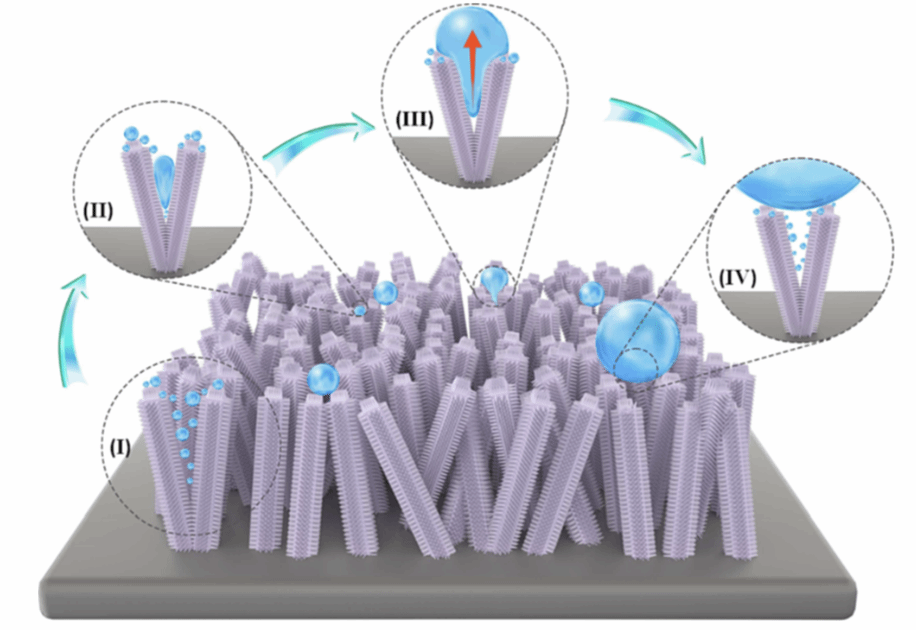Engineered Nanostructured Surfaces for Enhanced Moisture Condensation and Removal
Cooling and air conditioning account for 2000 TWh or 9.3% of the world's electricity output and are responsible for an estimated 0.5℃ rise in global temperature. In Hong Kong, a third of the generated electricity (1400 GWh) is for air conditioning, accounting for 9 million tons of CO2 emissions each year. For decades, electricity consumption for air conditioning has been growing at a steady pace of 1.5% each year in the territory but is expected to accelerate with climate change.Cooling air is more efficient when air is dry; thus, moisture removal can save as much as 50% electricity and cut greenhouse gas emission. The research team comprising experts from HKUST, Wuhan University, and the Max Planck Institute proposes NanoDew to enhance moisture removal from air and h-NanoSurface to promote condensate departure from the cooling surface.

The detailed surface's mechanism for inhibiting condensation-induced droplet wetting is that water nucleates within nanostructures and their growth eventually leads to a water bridge. This water bridge can be displaced outward by the Laplace pressure gradient spontaneously generated by b-NR structures, which prevents the pinning of the surface droplet and ensures a stable Cassie state of condensing droplets on the b-NR surface.
Generally, this project can increase moisture condensation (i.e., dehumidification), lower heat transfer resistance,
and improve the seasonal energy efficiency ratio (SEER). The potential savings in
electricity and money from these technologies are enormous, not to mention the
significant reduction in greenhouse gas emissions and air pollution.
